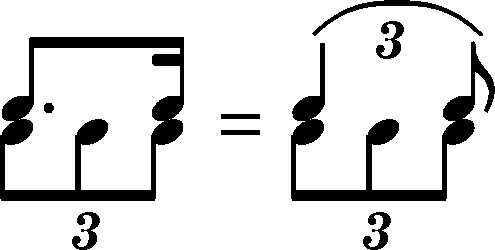



All his life Chopin adhered to the convention according to which  . That convention had been widely used until the middle of the 19th century, when gradually a new style of notation gained popularity, the one that has been binding until today. The most ardent proponent of the new system was the major German editor of Chopin’s works, the publishing firm Breitkopf & Härtel. In the works published by them semiquavers were moved after the 3rd note of the triplet disregarding the graphic layout of the base text or the musical or pianistic sense (cf. e.g. the comparison of the autograph and B&H's first edition based thereon in the Polonaise-Fantasy in A flat major Op. 61, bars 270-277).
. That convention had been widely used until the middle of the 19th century, when gradually a new style of notation gained popularity, the one that has been binding until today. The most ardent proponent of the new system was the major German editor of Chopin’s works, the publishing firm Breitkopf & Härtel. In the works published by them semiquavers were moved after the 3rd note of the triplet disregarding the graphic layout of the base text or the musical or pianistic sense (cf. e.g. the comparison of the autograph and B&H's first edition based thereon in the Polonaise-Fantasy in A flat major Op. 61, bars 270-277).
In bars 5, 9, 11 and 13 in GE (→FE→EE), the semiquaver in the  is moved to after the third note of the triplet in the accompaniment. There is no reason to believe that this corresponds to Chopin's notation or reflects his intention.
is moved to after the third note of the triplet in the accompaniment. There is no reason to believe that this corresponds to Chopin's notation or reflects his intention.
See the chapter devoted to this issue in Jan Ekier, Introduction to the National Edition, Editorial Issues, p. 183.
Compare the passage in the sources »
category imprint: Interpretations within context
issues: GE revisions, Dotted rhythms and triplets
notation: Rhythm


